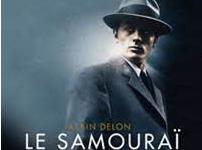Film noir began in the United States around 1940 and continued into the 1950s. It was identified and named by French film critics and is a type of crime film with an emphasis on pervasiveness of human evil and emotional perturbation, using chiaroscuro (the stark contrast of darkness and light) and weird, expressive camera angles to matching the style to the plot.
In a way, the phenomenon of film noir is a bit of a paradox, as it runs counter to the stereotype of the United States as an optimistic and even naive country with a can-do spirit, as a pessimistic genre flourishing after the Allied victory in World War II and the recovery from the Great Depression. But American culture has hardly been unrelievedly sunny: just consider, for example, Nathaniel Hawthorne, Herman Melville, Edgar Allan Poe, and Ambrose Bierce.
Moreover, Americans have no monopoly on film noir. For example, I have written previously here of Sir Carol Reed’s The Third Man,. a highly entertaining non-U.S. film noir Another excellent example is Le Samourai by the French filmmaker and Americaphile Jean -Pierre Melville (1917-1973). Melville was born Grumbach, taking the name Melville out of admiration for the American writer Herman. He liked cowboy hats and made a number of films noir, plus other genres of film.
Le Samourai opens with a pseudo-Japanese quotation (written by Melville) comparing the solitude of the samurai to that of a tiger in the jungle. Indeed, the film largely follows the cryptic character of hired assassin Jef Costello (Alain Delon). In a stark,, virtually wordless, beginning, we see him kill a nightclub owner after getting his lover, Jane Lagrange (Nathalie Delon, Delon’s wife at the time), to provide him with an alibi.
He seems quite a capable killer, so it is strange that, instead of going home afterward (we later learn that he is unknown to the police), he stops off to play cards with some men at a nightclub. After the killing, the police search nightclubs for likely suspects and bring Costello in. The pianist (Cathy Rosier) at the nightclub at which the murder was done, and who saw him leaving the scene, denies that he is the killer.
Is this because she is taken with the exceptionally handsome contract killer, or is she playing a deeper game? Does Costello stupidly draw attention to himself after being released by the police by returning to the nightclub to speak with the pianist (instead of waiting for her outside) because he is infatuated with her?
When Costello goes to a rendezvous after fulfilling his contract, instead of receiving his expected payment he is targeted for killing. He survives, and the plot thickens, with police—still suspicious—attempting to track Costello, those who originally hired Costello trying to decide what to do about him, and Costello seeking vengeance for the attempt on his life. The ending is surprising and compounds the mystery of the character.
Melville’s style is cool and refined, especially when Costello is on-screen; there are only slight hints of the psychological turmoil that must exist below the surface. In this way Melville captures an essential element of film noir. However, the coolness of Melville’s style is uncharacteristic of the genre, providing an interesting angle on the noir form. Le Samourai is a classic film noir and an object lesson in the power of that film style.



Shmuel–excellent article, with much interesting background on film noir. This is one I haven’t seen, and I will try to remedy that.